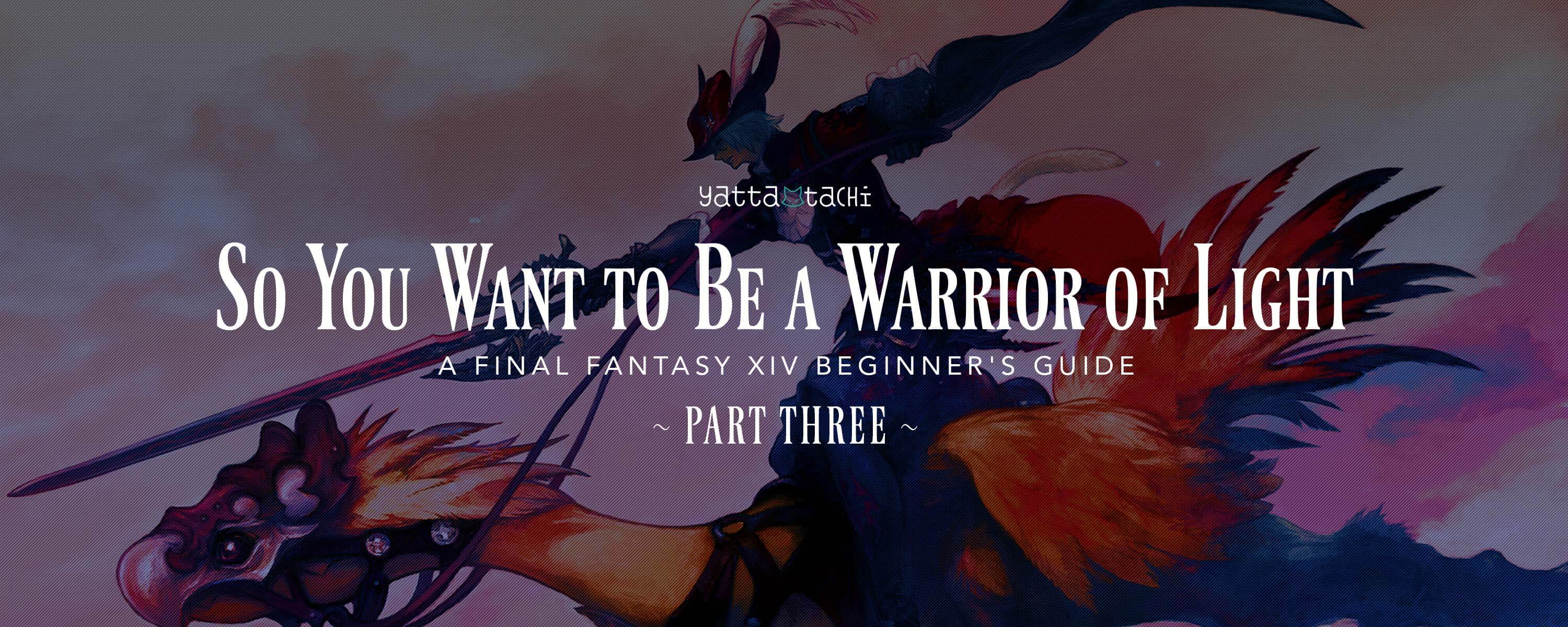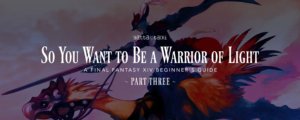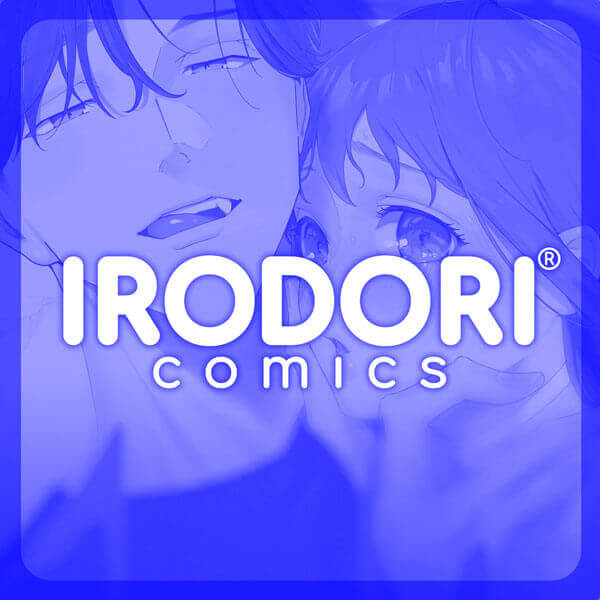Explanations
Free Companies
If you’ve played WoW, DnD, or any other medieval set game then you’ve heard the word ‘guild.’ Free Companies are guilds in FFXIV. These player-made groups are everywhere and the game gives you nothing but rewards for being in them, though it’s not a requirement for any part of the game. Once you reach level 25, FCs can be made by having at least four people sign a petition at any of the Grand Companies (GC) and paying a 15,000 gil fee. The levels of the people signing the petition do not matter.
After starting your FC, your next goal is to level it up. The max rank a FC can reach currently is 8 and it gives you access to the following: company buffs (which are bought from an NPC at your affiliated GC with FC points, or crafted in your FC Workshop); creating a company crest that can be put on specific clothing items; a FC chest to store items, crystals, and gil; and the ability to purchase land and build a house, which would include access to personal rooms that FC members can buy and a Company Workshop that gives members access to special crafts — Carbuncle houses, Grade III Aetherial Wheels, Airships, and Submarines being a few examples.
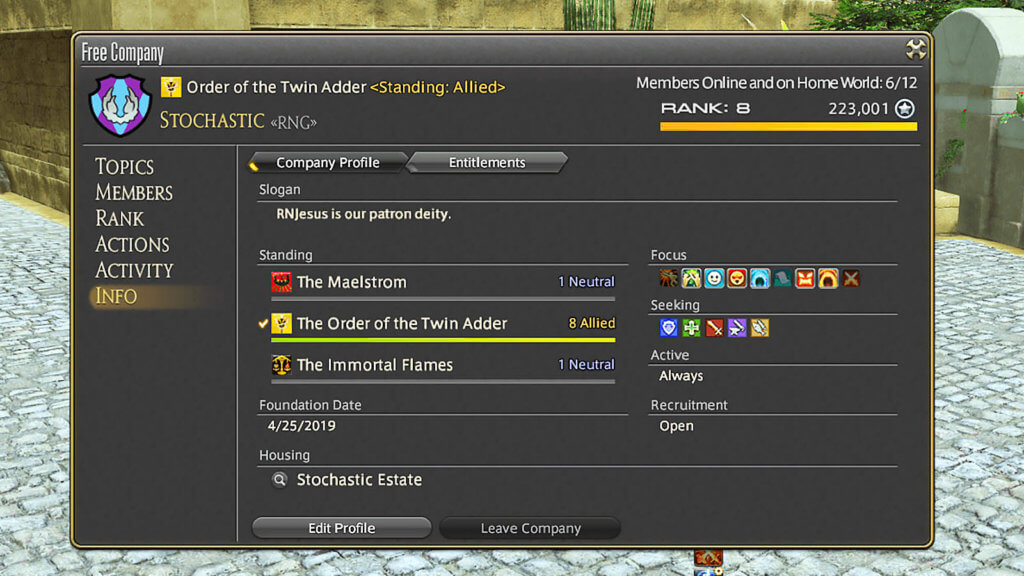
You can always leave a FC at any time andf for any reason without penalty and join another whenever you want. Don’t forget to clean out your personal room before you leave, though. Most FCs also take advantage of their free blog on the official forums to advertise what they like to focus on in the game, and if they’re recruiting new members. Some quick Google searches or sending some shouts out in populated areas will very quickly get you some answers, and probably some invites, too!
Grand Companies
During your MSQ when you’re around level 20 you’ll be required to join a Grand Company. In each of the three City-States there is a group of people tasked with protecting the inhabitants of the area. You can think of these groups as the City-State’s military. Gridania’s group is called The Twin Adders, Limsa’s is The Maelstrom, and Ul’Dah has The Immortal Flames. In terms of gameplay, there is no difference between the three.
Whichever you pick will become the city you will probably spend the most time in, since that’s where you’ll do your daily Expert Deliveries, pick up your weekly Hunt Bills, get your chocobo, and more. This is also the default team you’ll be on in certain PvP fights, though you can always choose to go as a ‘free agent’ instead. You can always switch to a different GC if you change your mind, and many people move around to earn all the possible in-game achievements, but this is optional. Some –myself included– pick one GC and stick with them. The only true difference between the three is how their special gear looks as you rank up.
There are three important things your GC does for you: they can sell you items that are difficult to obtain or are only offered through a GC, you gain access to a daily turn-in that gives a ton of EXP for crafters and gatherers, and you can also gain access to Squadrons. Squadrons are a group of NPCs that you send out on missions for various reasons. Once you’ve reached a certain rank, you can take them into specific dungeons with you to level them (and yourself) up. This is very handy for farming GC seals—the GC’s special currency—and for leveling secondary classes.
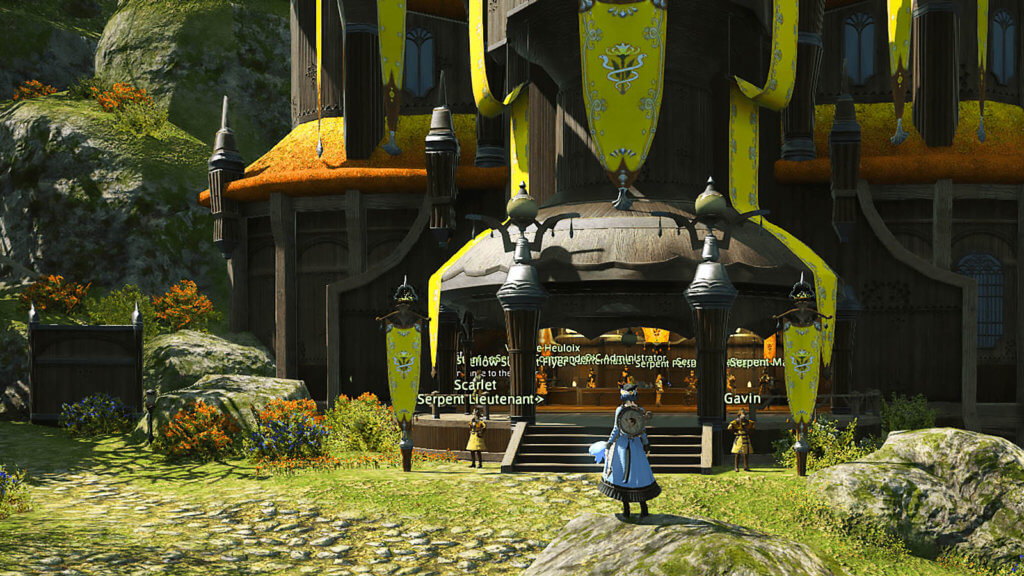
There are many ways to farm GC seals and you’ll need to earn quite a few when you first join. Doing guildhests, levequests, and FATEs are your top three GC seal farming options. The first thing you’ll want to do after joining a GC is increase your rank, which will cost quite a few GC seals each time you rank up. You’ll also need a good chunk to go towards buying your first mount. Once both of these are complete, feel free to use your GC seals on other important things like Ventures (the currency used to send Retainers on missions, discussed earlier) and Glamour Prisms (which will be brought up later.)
Duty List vs. Duty Finder vs. Party Finder
At one point or another, you’ll run into these little gems, one much sooner than the others. Since their names are all fairly similar, here’s a quick breakdown.
The Duty List is the list that’s set to the rightmost side of your screen by default. It contains quest titles with short instructions. You’ll see this as soon as you start the game, and there are many customization options for it, such as: how many quests you want it to show at a single time, how large you want the interface to be, where on the screen you want it, and special circumstances when it should disappear. You can think of the Duty List as your To-Do List.
The Duty Finder is where you’ll find all repeatable instanced fights. Everything, from the first dungeon you unlock to the extreme trials FCs race to beat, is sorted on this page. This is also where you’ll access your daily roulettes for that glorious EXP they give. So if you need to run a dungeon, raid, trial, or guildhest, this is where you’ll go. Note that any given instance will not appear until unlocked.
The Party Finder (PF) and the Duty Finder are best friends. If you’re looking for people to run old content with you and no one in your FC can go, instead of just queuing in the Duty Finder and waiting who knows how long to form a party, you can make a Party Finder using, well, the Party Finder. This pop-up window allows you to state which fight you’re wanting to do, set the parameters for how you want your party, and posts it for everyone in your World or Datacenter to see.
This is helpful for DPS who have long dungeon queue times to find a premade party to run with, for groups that want to take down an A Rank hunt but need more manpower, or even for people looking to join a cool FC. You can create a PF for almost anything;p just make sure you’re not advertising anything that breaks the TOS.
Character Status
Ever wonder what that weird symbol next to someone’s name is? Sometimes there’s a blue thing that kinda looks like a ticket dispenser, or sometimes there’s an angry red circle that looks like a bomb, and other times there are red swords. Each of these tells you what the character you’re looking at is doing.
The blue ticket dispenser means that person is queuing for a duty and is waiting for their turn; the angry red circle means they’ve set themselves to ‘Busy’ which will prevent party invites, trade requests, private messages, FC invitations, and a handful of other things; the crossed red swords mean the character is in a special fight, usually in an instance or for a quest; the Youtube-looking play button indicates the player is in an instance, typically a dungeon, raid, or trial; the red circle with a heartbeat-monitor-line-thing tells you the person is having connection issues; and lastly the red chair means the person is AFK (away from keyboard). So if you send a message to someone and never get a response, check the symbol beside their name: it might give you the reason why.
Three other symbols that you might see in front of a player’s name is a golden crown, a yellow flower, or a green sprout. The crown indicates that the character is a mentor. This means that character has achieved certain goals and has been marked as a kind of expert of the game. Being a mentor doesn’t really add anything to the game other than gaining access to the Mentor Roulette, which is another daily roulette that prioritizes placing the mentor with people that have the other two symbols.
Having a flower next to your name marks you as a Returner, or a person that used to play the game took a long break and has come back. This doesn’t really do anything for you except give you an EXP bonus for a few hours when you party up with a mentor. The flower doesn’t last long, so enjoy the cute little thing while you have it!
All new players are marked with a sprout and are a way for veterans to immediately identify that fact. Typically, this is a good thing. When you go into a dungeon or raid and you have a sprout, there’s a good chance someone might ask if you need help with mechanics and they can help you through the content. While the mentor/sprout system was made with this perfect world in mind, it, unfortunately, doesn’t always play out like that. Don’t be discouraged, though. If you’re new to content and decide to pug a dungeon –pug being short for pickup group (meaning you participate in the game’s matchmaking system)– let your party know you’re new. In my experience, players will go easier during the run and will explain the fights for you. Since this isn’t a perfect world, this might not happen every time you try, but it won’t hurt.
The other thing that mentors and sprouts get access to is the Novice Network. This is a special in-game chat for new players to ask the veterans questions and get help clearing content. As long as you have one of those symbols next to your name, you can get access to the Novice Network, so definitely take advantage of having these helpful contacts while you can.
Glamour
Glamour: the true end-game. WoW (World of Warcraft) refugees will know this as transmog. With some restrictions, you can glamour your character’s attire to look like another item in the game. FFXIV is full of glamouring options and the system has recently been simplified: all you need is the item you want your gear to look like and an item called a “glamour prism.”o For every piece of gear you want to change, you’ll need one glamour prism to make the change. These can be bought with GC seals or off the market board, and they can also be crafted, making them very easy to come by.
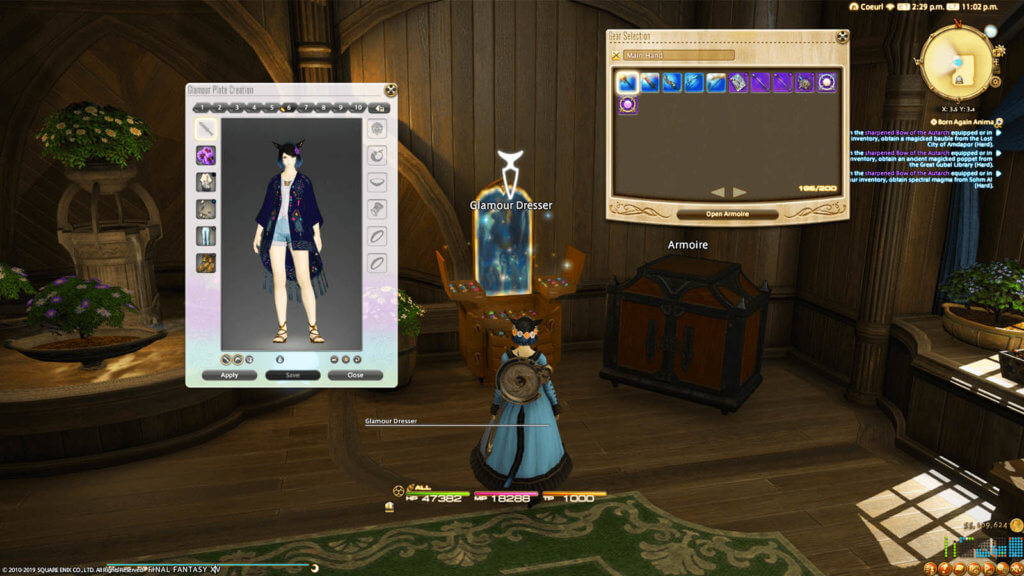
Inside the inn rooms –and it doesn’t matter what city’s inn you’re using– you’ll find the glamour dresser. The dresser allows you to store up to 200 items (you’ll have to use a glamour prism for each item you want to place in the dresser) and gives you access to 10 glamour plates. With this, you can preset outfits for your character, including dying them the color you want if applicable. Once you’ve got a glamour plate set, you can go into your Character pop-up box, choose a class you want to glamour, link it to one of the plates, and the game takes care of the rest. If you like to switch between a few outfits for your character, this is an easy and cheaper way to do it.
[Note: A recent Letter from the Producer revealed that the glamour dresser’s item limit will be raised to 400 and that players will also have access to more plates to customize.]
Housing
Housing is a hot topic in game, and at the time of writing this, it’s a little bit of a mess. As it stands, there’s not enough housing to meet the demand, making it very difficult for any player on any server to snag one of these highly sought-after lots. While Square Enix is looking at ways to solve the problem, and has made quite a bit of headway with this, it hasn’t been enough to placate many of the players.
Here’s a breakdown of how housing works in-game. The housing system allows players to buy a piece of land –small, medium, and large plots are the options– and build a house. (Apartments are also available but are smaller than a small house and they don’t have access to a yard.) If you buy a house for personal use, the only benefit (besides bragging rights) is you have access to gardening and helpful items for DoH classes. Crafters and gatherers can really benefit from houses because of this, but it’s not a must-have for these classes, especially if you’re not looking to do any high-end crafting. Keep in mind that FC’s can also buy land and have these items as well, and FC’s get bonuses.
On top of the things that personal houses offer players, FC owned plots also get access to Private Chambers and Company Workshops. Private chambers allow members of the FC to purchase a room and decorate it as they want. These spaces are fairly small, but you basically have a guaranteed chance to get one as long as you’re a member of an FC. The company workshop offers joint projects that multiple members of the FC can participate in. Players can build airships and submarines and send them out on missions to bring back exceedingly rare items, or take a ride on the airship to a hellish place known as the Diadem. Special housing exteriors can be crafted so you can theme your house around carbuncles, odder otters, chocobos, and more!
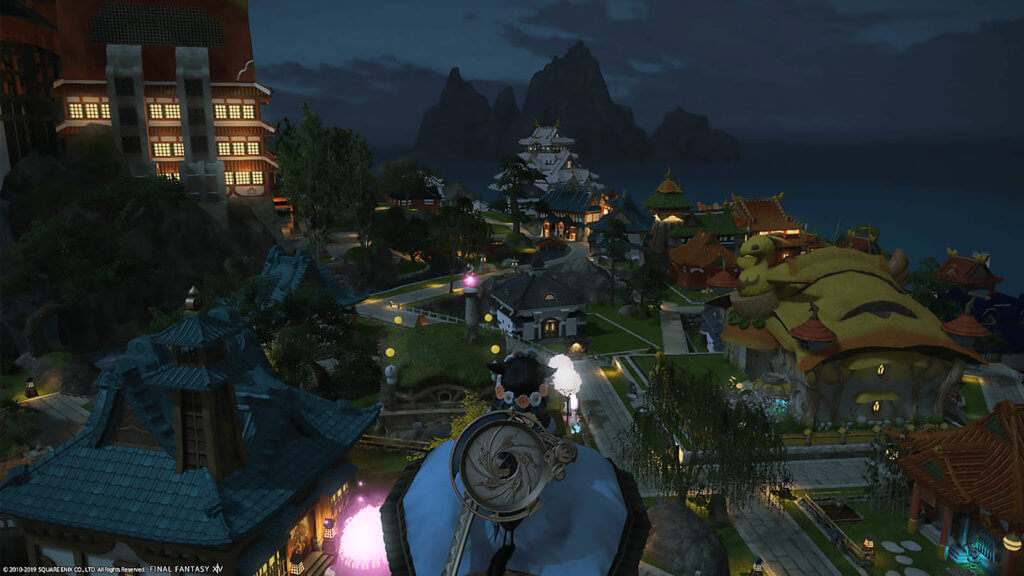
The final and arguably most important aspect of having an FC workshop is getting access to grade 3 aetherial wheels. These items are difficult to unlock and craft, but offer a great reward. Once crafted and primed on an aetherial wheel stand, these items turn into grade 3 company actions.
FCs can purchase grade 1 and 2 actions from their allied city-state. These can do everything from increasing the amount of experience gained, lowering the cost of teleports, providing more CP points for crafters or GP points for gatherers, and a dozen more options. Grade 1 and 2 actions give a very good boost to everything, and grade 3 is even better. These are not a necessity in the game. Many FCs might not care about putting in the time or effort to attain these items. And in all fairness, it is a hefty task. Though if you’re the kind of person who enjoys playing the long game, these can definitely be worth the wait.
The End
That about covers the basics you need to know for the game. From leveling and retainers to crafting and housing; there’s a lot to take in. Don’t get frustrated if you don’t get the hang of everything immediately; there’s a reason the first M in MMO stands for Massive. Take your time, play at your own pace. Final Fantasy XIV is a huge game with a fantastic community. So go out and explore, maybe make some new friends! Either way, I hope this helps all of you out there, and I’ll see you in Eorzea!
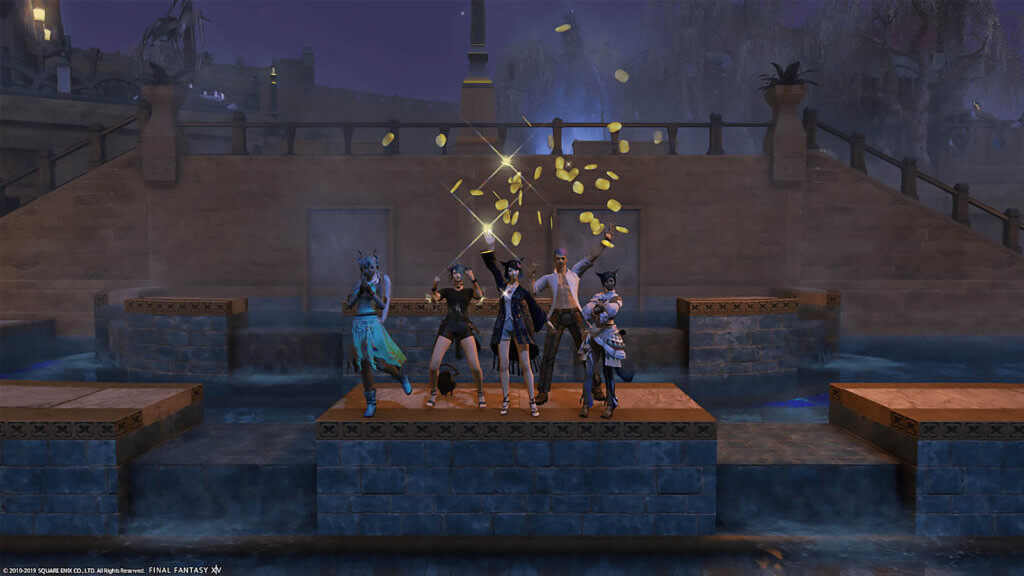
Journey back and read So You Want to Be a Warrior of Light: Part 1 and So You Want to Be a Warrior of Light: Part 2!

Featured Sponsor - JAST
The sweetest romance and the darkest corruption, the biggest titles and the indie darlings; for visual novels and eroge, there's nowhere better.
Big thank you to our supporters
From their continous support, we are able to pay our team for their time and hard work on the site.
We have a Thank-You page dedicated to those who help us continue the work that we’ve been doing.
See our thank you page